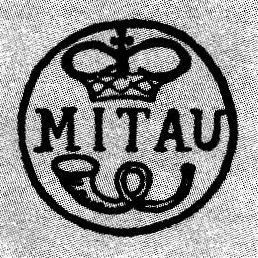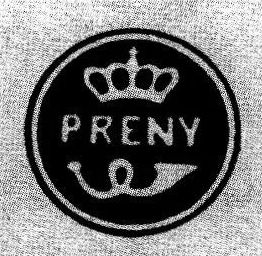Lithuania
-
Royal Polish Post
Grand Duchy of Lithuania until 1569
The first mention of Lithuania can be found in the Quedlinburg Annals of 1009, which is why the Lithuanian state celebrated its thousandth anniversary in 2009. The victory over the Livonian Order in the battle of Schaulen (iauliai) in 1236 initially secured Lithuania's independence.

The Territory of Lithuania in the 13th to 15th Centuries
Source: Vilniaus universiteto Kartografijos centras (Ed.) 2001: Lietuvos istorijos atlasas, p. 5 (German legend added)
A wedding changed the history of Europe in 1385
When the ruling house of the Piasts in the main line became extinct with the death of the Polish King Casimir, the Lithuanian Grand Duke Jogaila married the Polish Queen Jadwiga (Hedwig) and ascended the Polish throne as Vladislav II. This union of Krėva established the personal union of the two states and the Christianisation of Lithuania. The largest territorial state in Europe came into being for a time.
Coat of Arms of the Polish-Lithuanian Union Source: Wikimedia
Postal system
The first private postal service is documented for 1387, when merchants established a mounted courier service. The volume of mail initially remained low and was limited almost exclusively to merchants, the clergy, the nobility and royalty.
On October 17, 1558, the Polish King Sigismund II. August ordered Prospero Provano, a Venetian merchant living in Krakow, to organise a postal service in Poland. This is the documented beginning of the royal postal system in the territory of the Polish-Lithuanian Union, which was to unify the private services that had existed until then and to establish a "public" postal service.
At first, however, this only succeeded imperfectly. Between the 16th and 18th centuries, the royal house granted changing postal fiefdoms without succeeding in establishing a permanent and sustainable postal system. Thus, the House of Thurn and Taxis, Italian, Swedish and Saxon "postmasters general" alternated in quick succession. Only the postal service for the royal house functioned reasonably well.
Poland-Lithuania 1569 to 1795
Shortly before the extinction of the Jagiellonian dynasty, the state union of Lithuania with Poland took place with the Union of Lublin in 1569. The personal union in the person of the common head of state became the real union of the two states: Poland-Lithuania became a "noble republic" and elective monarchy. This is reflected in the official title Rzeczpospolita Korony Polskiej i Wielkiego Księstwa Litewskiego (Royal Republic of the Polish Crown and the Grand Duchy of Lithuania).
After the death of a king, the nobles gathered and elected a new king. Real power in the country thus increasingly passed into the hands of the nobles.
Numerous wars as well as internal unrest overcharged the Polish noble republic, so that many territories on the Baltic Sea were lost to Sweden and large parts of Eastern Europe to Russia.

The Three Partitions of Poland in the 18th Century
Source: Putzger, F.W. 1978: Historischer Weltatlas. 99. edition. Page 116.In three partitions in 1772, 1793 and 1795, the neighbours Russia, Austria and Prussia finally ended the state existence of the noble republic. Poland and Lithuania only re-emerged as independent states in 1918.
Postal system
In 1583, under King Stefan Bátory, Poland-Lithuania was the first state in Europe to introduce a uniform weight-based postage of 4 groszy for 1 Łut (4 groschen for 1 Polish lot of 12.66 grams) regardless of the distance within Poland.
Under the reign of Augustus the Strong (r. 1697–1733 with an interruption in 1705–1710), postal routes were better monitored than before. By erecting so-called "Saxon milestones" every 4.5 km along important postal routes, a clear definition of the routes and a better estimation of distances was achieved. A Saxon mile corresponded to 9,062.08 m or 2 hours of travel. The "travel times" indicated on the distance pillars in hours are therefore distances in miles multiplied by 0.5 or distances in kilometres multiplied by 4.5.

Splendid letter from 1722 to Augustus the Strong
Source: Doniela, Vytautas: Lithuania – Royal Mail 1697–1765. In: Lithaunian Philatelic Society Journal No. 244, Seite 5In 1701, a postal transfer treaty was concluded with Russia. The volume of mail must still have been low. Thus, a regular service served the Warsaw-Vilnius route only every 14 days at the beginning of the 18th century.
Various postmarks were introduced in the (17th and) 18th centuries:
Polish round postmarks with different crowns and post horn from the then Lithuanian area (exception: Mitau / Kurland). Source: Bubnys, Vygintas & Normantiene, Julija 2014: Patas Lietuvoje iki 1918 metu. 1 Knyga, Vilnius. Page 23.
In 1795, Poland-Lithuania disappeared from the map of Europe for 123 years and new masters took over the postal services.
Imperial Russian Post
German Occupation / Ob. Ost
Independent Republic of Lithuania
Central Lithuania
Memel Area / Klaipėda
Soviet Occupation
German Occupation / Ostland
Camp Mail / Lithuanians in Exile
Independent Republic of Lithuania (restored)
Private Mail in Lithuania








